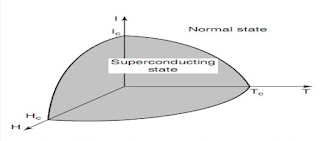Satellites have become an integral part of our lives, providing communication, navigation, and remote sensing services. But have you ever wondered how they orbit the Earth? In this article, we'll explore what satellite orbits are and the different types of satellite orbits.
What is a Satellite?
A satellite is a heavy object that goes around another object in space due to the effect of mutual gravitational forces. In common usage, we use the term "satellite" to refer to an artificial object launched to travel around the Earth or other planets. However, the Moon is a natural satellite of the Earth.
What is a Satellite Orbit?
The path in which a satellite travels around the Earth in its stable condition is called a satellite orbit. The distance from the center of the Earth to the satellite is called the orbit radius, while the height of the satellite from the surface of the Earth is called altitude. At any point in the orbit, the angle of the rotation of the satellite with the horizon is referred to as inclination.
Classification of Satellite Orbits:
Satellite orbits are characterized by three attributes: radius, altitude, and inclination. Let's explore the different types of satellite orbits based on these attributes.
1.Based on Inclination:
According to inclination, satellite orbits are classified into three types:
i) Equatorial orbit: The orbit whose plane coincides with the equator of the Earth is known as the equatorial orbit. Their inclination angle is zero.
ii) Polar orbit: The orbit whose plane coincides with any polar axis of the Earth (a line passing through the reference points of the North and South poles) is known as a polar orbit. Their inclination angle is 90 degrees.
iii) Inclined orbit: The orbit that is neither equatorial nor polar is known as an inclined orbit. Their inclination angle lies between 0 to 90 degrees.
2. Based on Radius:
Based on radius, satellite orbits are classified into two types:
i) Circular orbit: The orbit in which the orbital radius is constant is called a circular orbit.
ii) Eccentric orbit: The orbit in which the orbital radius is varied is called a circular orbit.
3.Based on Altitude:
Based on altitude, satellite orbits are commonly classified into three types:
i) GEO: Their typical altitude is above 36000 km.
ii) MEO: Their typical altitude is from 8000 to 15000 km.
iii) LEO: Their typical altitude is 500 to 1500 km.
It's worth noting that there are no satellite orbits below 500 km due to Earth's atmospheric drags that create disturbances that are hard to avoid. At altitudes of 2000-5000 km and 15000-30000 km, there are belts of ionized particles known as the inner Van Allen belt and outer Van Allen belt, respectively, making satellite orbits impossible in these ranges as communication would be impossible.
4.Based on Observation Nature:
Based on observation nature, satellite orbits are classified into two types:
i) Synchronous orbit: An orbit in which the satellite passes every location of the Earth at the same time each day is called a synchronous orbit.
ii) Asynchronous orbit: If a satellite is not synchronous, then it is called an asynchronous orbit.
5.Based on the Direction of Satellite Rotation:
Based on the direction of satellite rotation, satellite orbits are classified into two types:
i) Pro-grade orbit: An orbit in which the satellite moves in the same direction as the earth's rotation is pro-grade orbit also known as direct orbit. The inclination of a pro-grade orbit always lies between 0 to 90 degree. Most of the satellites are launched in pro-grade orbit because the earths rotational velocity provides part of the orbital velocity with a consequent saving in launch energy.
ii) Retrograde orbit:An orbit in which the satellite moves in the opposite direction as the earth's rotation is retrograde orbit. The inclination of a retrograde orbit always lies between 90 to 180 degree.
Some Special Orbits:
Quazi zenith or figure-8 orbit: This is essentially a GEO that is inclined some 45 degree. Three satellites in this orbit provide excellent high-look angles to countries located at 45 degree latitude. This orbit is used by japan for mobile satellite communications and to provide supplemental space navigation services.
String of pearls: It is a circular orbit in the equatorial plane but deployed in MEO rather than GEO. 6 to 8 of these satellites with similar communications capability could continuously provide service to equatorial countries where some 2 billion people live. This type of system has been proposed by the Brazilian space agency but not actually deployed. There have been proposals from Japan to create an extremely high speed orbital network via a ring of satellites that are linked together via laser-based inter-satellite connections to achieve global inter-connectivity.
In conclusion, satellite orbits can be classified based on various parameters, including inclination, radius, altitude, observation nature, and direction of satellite rotation. Each type of orbit has its own unique characteristics and is used for different purposes, such as communication, weather monitoring, navigation, and surveillance. Understanding the different types of satellite orbits is important for designing and launching satellites, as well as for interpreting data gathered by them.








